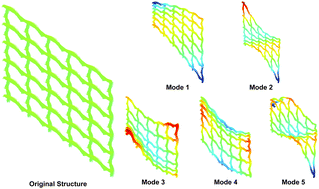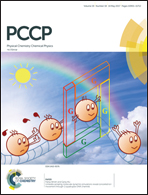Mechanical and vibrational characterization of amyloid-like HET-s nanosheets based on the skewed plate theory†
Abstract
Pathological amyloidogenic prion proteins have a toxic effect on functional cells in the human cerebrum because of poor degradability and the tendency to accumulate in an uncontrolled manner under physiological conditions. HET-s, a fungal prion protein, is known to undergo conformational variations from fibrillar to nanosheet structures during a change from low to high pH conditions. It has been said that this conformational change can lead to self-propagation by nucleating on the lateral surface of singlet fibrils. Efforts have been made toward the mechanical characterization of fibrillar amyloids, but a global understanding of amyloid-like HET-s nanosheet structures is lacking. In this study, we analyzed the mechanical and vibrational characteristics of the skewed HET-s nanosheet structures that developed under neutral pH conditions by performing various molecular dynamics simulations. By applying the skewed plate theory to HET-s nanosheets for various length scales with numerous pores inside the structures, we found that the skewed HET-s nanosheet structure has mechanical properties comparable to those of previously reported biological film materials and nanomaterials. Considering the inherent characteristics of structural stability, our observation provides valuable and detailed structural information on skewed amyloid-like HET-s nanosheets.



 Please wait while we load your content...
Please wait while we load your content...